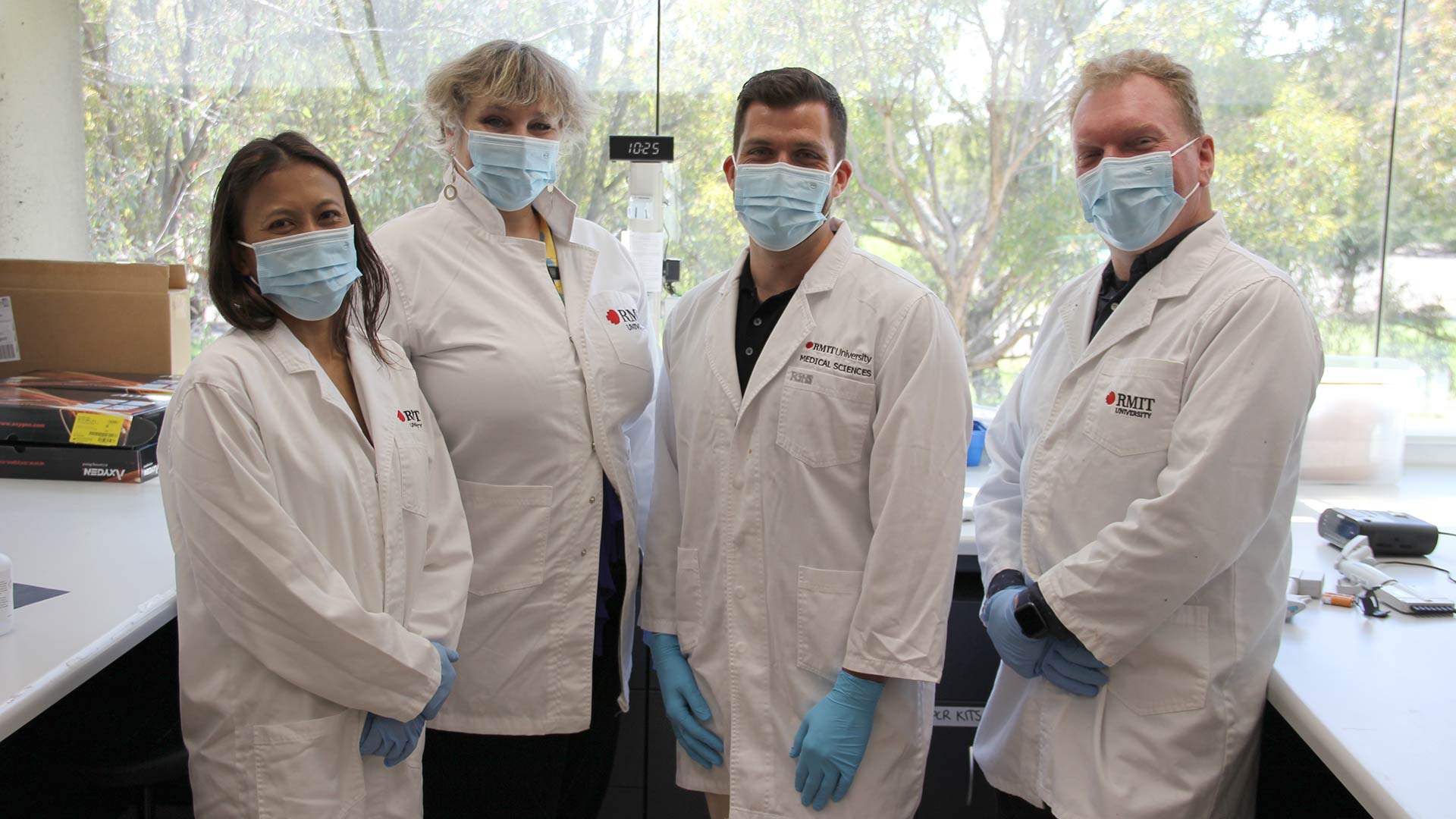
Every year ovarian cancer takes the life of a quarter of a million women worldwide, including 1,800 Australians. For every woman diagnosed with ovarian cancer, 70% will discover they are in an advanced state, and only 25% of these women will survive beyond five years.
The symptoms of ovarian cancer are commonly misdiagnosed as gastrointestinal or bowel problems, leading to these high rates of late diagnosis. There is also no early detection test for ovarian cancer. Currently, the only reliable diagnostic method is an invasive biopsy performed by a specialist that, when positive, is followed by intense chemotherapy with no time for recovery.
In November 2021, our team won a National Health and Medical Research Council (NHMRC) valued at $1M to create a more portable, inexpensive handheld device to more accurately detect ovarian cancer.
The team brings together engineering and biomedical experts at RMIT University, led by ovarian cancer specialist Magdalena Plebanski and integrated photonics specialist Arnan Mitchell.
Our team has discovered the biological markers present in patients with ovarian cancer, which appear years before symptoms even arise.
To be able to rapidly and accurately test for these ovarian cancer markers, the team are using two main approaches: photonic biosensors and microfluidics. Photonic biosensors contain up to 100 tiny sensors and use light to rapidly ‘see’ specific biomolecular markers – like those in ovarian cancer patients. Complex microfluidics are tiny automated filtration devices that can rapidly filter for cells or proteins in a tiny sample of blood.
We hope to create an accessible, reliable and cost-effective screening tool for ovarian cancer to be used by in-clinic GPs with these techniques. If successful, this research will save thousands of Australians’ lives, with faster ovarian cancer diagnosis than ever before.

Partnering with InPAC will allow us to tackle ovarian cancer detection faster, through their integrated photonic technologies that can miniaturise laboratories’ worth of equipment onto a portable chip.
- Distinguished Professor Magdalena Plebanski
For more information about ovarian cancer diagnosis, please contact Magdalena Plebanski and April Kartikasari.
For more information about lab-on-a-chip and photonic biosensors, please contact Arnan Mitchell and Cesar Sanchez Huertas.


RMIT University acknowledges the people of the Woi wurrung and Boon wurrung language groups of the eastern Kulin Nation on whose unceded lands we conduct the business of the University. RMIT University respectfully acknowledges their Ancestors and Elders, past and present. RMIT also acknowledges the Traditional Custodians and their Ancestors of the lands and waters across Australia where we conduct our business - Artwork 'Sentient' by Hollie Johnson, Gunaikurnai and Monero Ngarigo.
Learn more about our commitment to Indigenous cultures